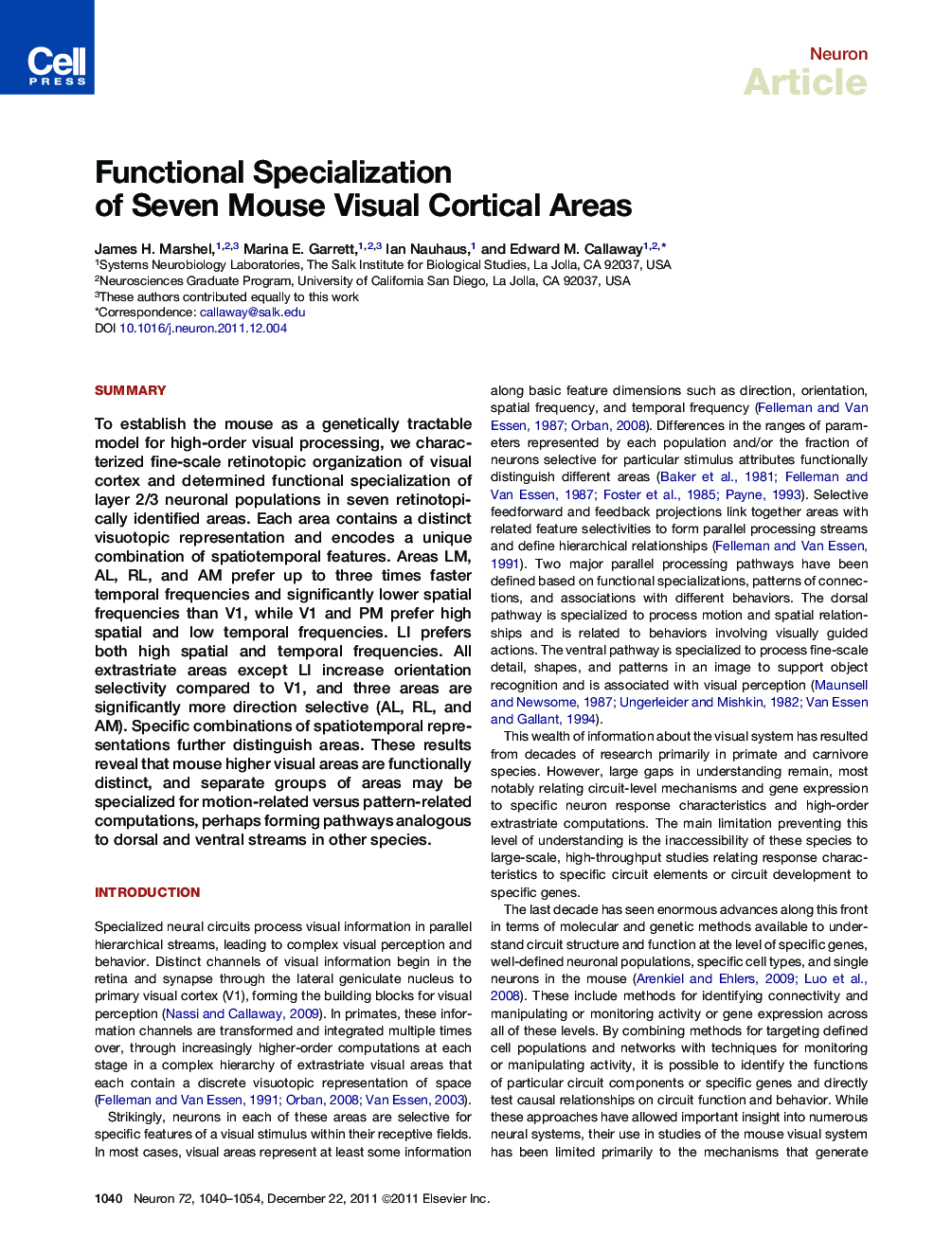| Article ID | Journal | Published Year | Pages | File Type |
|---|---|---|---|---|
| 4321414 | Neuron | 2011 | 15 Pages |
SummaryTo establish the mouse as a genetically tractable model for high-order visual processing, we characterized fine-scale retinotopic organization of visual cortex and determined functional specialization of layer 2/3 neuronal populations in seven retinotopically identified areas. Each area contains a distinct visuotopic representation and encodes a unique combination of spatiotemporal features. Areas LM, AL, RL, and AM prefer up to three times faster temporal frequencies and significantly lower spatial frequencies than V1, while V1 and PM prefer high spatial and low temporal frequencies. LI prefers both high spatial and temporal frequencies. All extrastriate areas except LI increase orientation selectivity compared to V1, and three areas are significantly more direction selective (AL, RL, and AM). Specific combinations of spatiotemporal representations further distinguish areas. These results reveal that mouse higher visual areas are functionally distinct, and separate groups of areas may be specialized for motion-related versus pattern-related computations, perhaps forming pathways analogous to dorsal and ventral streams in other species.
► Seven mouse visual areas are functionally specialized to encode unique information ► Fine-scale retinotopy reveals at least nine distinct visual field representations ► Subsets of areas encode high temporal versus high spatial frequency information ► Three areas encode high direction selectivity; most are highly orientation selective
